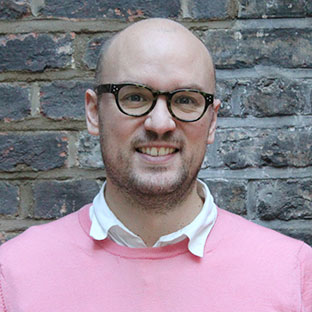Today marks the start of a two-and-a-half year investigation into the role that cultural learning in schools plays in improving educational outcomes for children.
It’s intentions are two-fold: to build the evidence base for what works and to improve the way that evidence of effective approaches is used by practitioners in schools and the cultural sector.
Our belief is that by strengthening the evidence base for impact and building capacity for evidence-informed practice among cultural learning practitioners, we can improve the status, quality and long-term sustainability of the arts in our schools.
A couple of years ago, Matthew Taylor wrote a blog asking ‘what if schools spent 10% of their pupil premium funds on arts and cultural activity’. It was a provocation to encourage new thinking about how to ensure that more disadvantaged young people could get a chance to participate in the arts. When Matthew and I discussed the idea with Ministers at the Department for Education and Department for Culture, Media and Sport in 2016, we quickly realised a sticking point: pupil premium funding is expressly intended for activities expected to help close the attainment gap.
Unfortunately, in spite of many studies in this area, the evidence to demonstrate a causal link between arts activity and improved attainment is slim. Rather than dissuading us, this seemed like an obvious opportunity to close that evidence gap; to get more information about how the arts help pupils make progress, in order to help schools identify more funds to make provision accessible.
The programme we are launching today is a partnership between the RSA and the Education Endowment Foundation, a ‘what works’ centre established with the express purpose of researching how to close the attainment gap between disadvantaged children and their peers. Together we were certain about the project’s first aim, which would answer the need for more robust evidence for how arts activities improve a range of pupil outcomes linked to raised attainment:
Aim 1: Build a stronger evidence base for cultural learning
However, as we developed the programme together, consulting closely with arts practitioners, funders, strategic agencies and schools, we understood that just having evidence couldn’t ever be the answer. We had to make sure that it made its way into practice.
The challenge here is two-fold. One of the important features of the cultural sector’s partnerships with schools is the distinctiveness of different artists, organisations and projects. Any evidence of impact would need to speak to a diverse sector, looking not to replicate the success of others, but to incorporate and adapt successful approaches into new ways of working. It would also need to overcome what the RSA’s early research has revealed to be a gap in effective use of evidence and evaluation in the sector. In order to ensure that our research could make a difference to children, we would need to find out how to increase capacity in the sector for turning evidence into effective practice; to move away from using evidence primarily as a tool for advocacy, to seeing it as a tool for self-improvement. That’s why Learning About Culture has a second aim:
Aim 2: Improve the use of evidence in cultural learning
The programme methodology is wide ranging, including (but not limited to) a series of randomised controlled trials to test the effectiveness of cultural learning activities in improving a range of pupil outcomes. We’re excited to be working with five promising programmes, all providing arts and culture-rich activity, designed around well-evidenced approaches to improving learning outcomes. The trials start September 2018, and will be evaluated by a joint team of independent evaluators from UCL-Institute of Education and the Behavioural Insights Team. Beyond that, the RSA will lead qualitative research to improve understanding of how contextual factors can improve the impact of successful projects and pilot a series of interventions to increase the use of evidence in the cultural learning sector. You can read the detail in our project prospectus and sign up to keep up to date with progress over the next two and a half years.
In keeping with the RSA’s developing methodology for achieving social change – think like a system, act like an entrepreneur - the programme is supported by a broad coalition of stakeholders including the Department for Culture Media and Sport, Arts Council England, the Paul Hamlyn Foundation, the Bridge organisations’ network, Bank of America Merrill Lynch and Foyle Foundation. Over the next few years, the RSA will work with all these partners and a growing network of evidence champions across the country, in schools and cultural organisations to develop mechanisms for cross-sectoral sharing of best practice and to enable more individuals to spot the opportunities for further practice improvement.

The five Cultural Learning Fund trials - all currently recruiting schools.
The Power of Pictures - Centre for Literacy in Primary Education (CLPE)
Teachers work with author-illustrators of children’s books to develop their understanding of the craft of picture book creation and illustration as a way of raising children’s achievement in literacy.
The Craft of Writing – Arvon, University of Exeter, the Open University
Residential writing courses supporting teachers to develop their identity and craft as writers and to transfer new pedagogical approaches to the classroom. The project aims to improve children’s writing skills and motivation to write.
Speech Bubbles – London Bubble
Small group drama for children who lack confidence in communicating, have difficulty communicating and/or have poor attention and listening skills. Children act out their own stories together. The project aims to improve communications skills and confidence.
The Young Journalist Academy - Paradigm Arts
Newsrooms are created in school in which children work with industry professionals to research and write news stories, produce films and radio content. The project aims to improve children’s literacy, confidence, communications skills, and collaborative working.
First Thing Music – Tees Valley Music Service
A structured music education programme involving whole classes participating in daily singing and musical games. Students will learn the basics of music, develop their literacy, and social and emotional skills.
Find out more:

Join the discussion
Comments
Please login to post a comment or reply
Don't have an account? Click here to register.
The evidence is not slim at all . Please refer to the international reports (in Spanish and English) I produced as Director of Research for the Botin Foundation. After six years leading teams investigating Innovative Education and Social and Emotional Education in 21 countries we were also able to produce four books containing evaluations and giving detailed case studies of all the countries that showed the many positive effects of the Arts in schools.
went on to publish two reports on Creativity: 'Good Morning Creativity' and 'Arts and Emotions- Nurturing our Creative Potential'. https://www.fundacionbotin.org/internal-education-area/creativity.html There are now at least 280 Spanish maintained schools and 7000 teachers working on arts programmes derived from this research and the ideas are now being taken up in Argentina, Uruguay and Chile. In fact i would go so far as to say an arts-rich curriculum is the right of every child. The effects are better mental health, less anti-social and more pro-social behaviour, greater academic achievement and happier schools. Asking only for 10% is very modest and it helps enormously to think internationally.
There should be some evidence or at least some pointers from the work carried out by the Creative Partnerships initiative under the previous Labour govt. A lot of data was certainly collected!
This "research" is a mess; and for whose political benefit is this being done - it is certainly not for the children. There is very little understanding of the basics of child development in these projects. Without that you cannot possibly understand how the Arts impact on (a) child development (b) eventually through motor -sensory integration impacts on learning.
I think it is a dangerous and high stakes game for the Arts to play - every culture uses the Arts to develop children's skills in a fun and playful way. It is what makes the repetition, necessary to develop skills, enjoyable. If you prove that the Arts do not improve numeracy and literacy then what? The middle-classes will still pay for their children to enjoy a rich diet of Arts education and the poor what about them - the food banks don't offer such things yet.
Picture illustrators = improvements in literacy - no, of course, there is no causal relationship. I have seen a child today who is having problems reading for meaning her eyes are not crossing her mid-line when reading; her sound processing is no longer suppressed, but she cannot differentiate between pitch in the main speech processing zone 1,000Hz to 4,000Hz so struggles to understand and recall speech; she has poor core strength and that is impacting on her binocular vision. So to improve literacy I need to sort out all the underlying physiological problems and then play games that ensure that she develops the cognitive sensory links so that she can use all her senses and motor skills in an integrated manner. In the long run she will be a very able student. I am sure that she would thoroughly enjoy sessions working on book illustrations, but tying everything into literacy for children who are not yet developmentally ready is poisoning education and causing ever younger children to self-harm. Children need time and the Arts to develop all their micro-skills; rushing to complex higher level skills as the justification for everything is doing terrible emotional damage to our children.
Once children tense up they tense up their bodies and clamp their jaws. This blocks cognitive processing; in extremis children can become elective mutes or resort to violent temper tantrums. It is very hard work moving children on from either of those positions. A priority of education must be to allow the children to move and be joyous - for the sake of it - so that they are open to learning. The Arts is very good at doing that.
The Speech Bubbles project focuses on "
This looks to be a very interesting project.
My particular interest in this area is how, following the success of Black History month, the Gypsy Roma and Traveller History Month was set up, receiving government support under the last Labour Government due to the intervention of Lord Adonis. The Coalition government withdrew support in England, but the Welsh Government continues to support it. In England it has amazingly staggered on in a fragmented, local way, with almost to collection of evidence to inform practice. The participation of UK Romani artists in educational work related to this had had considerable influence internationally through the Open Societies. The Paul Hamlyn Foundation and The Bridge Organisation have been helpful in sponsoring local projects with the Roma Support Group (of which I am Patron and whose Chief Exec. Sylvia Ingmire is also a Fellow.). This would make, I think a useful case study for this project
Excellent concept and a very clear article.
Best of luck with it. It deserves to succeed, hopefully getting Ministers to see the positive impact art can have on pupil engagement in all forms of education.